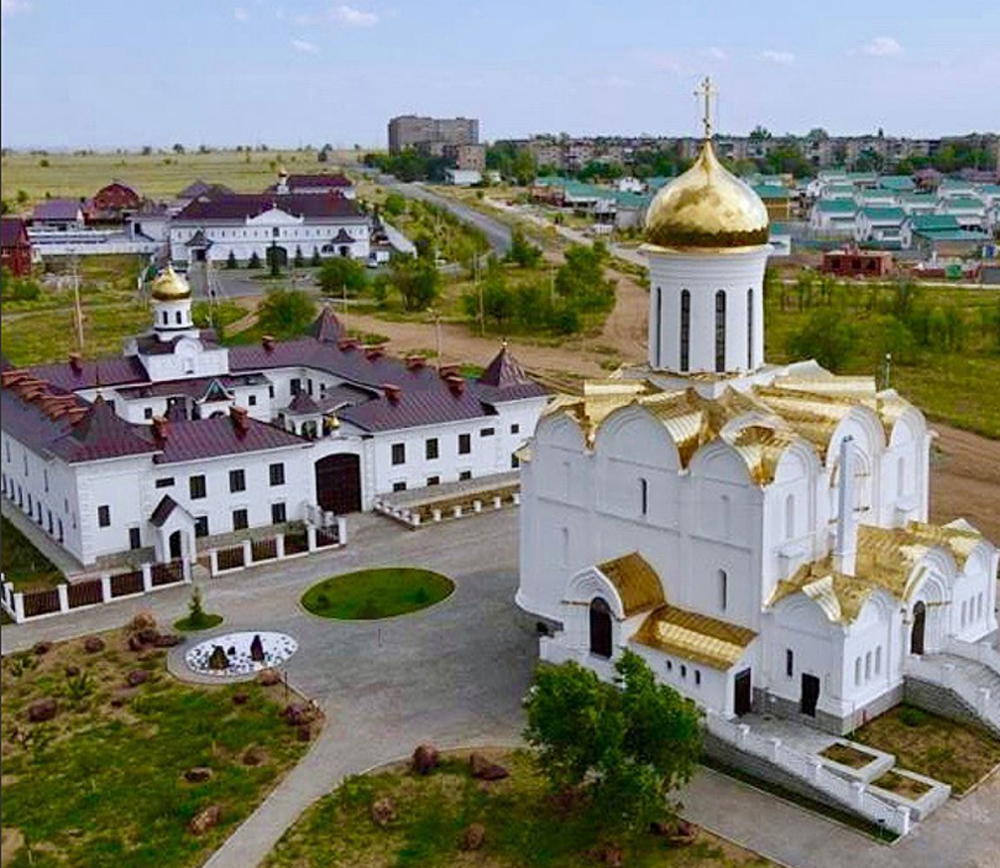
The design project of the Iveron Monastery was developed by the architectural company “Telets,” precisely according to the drafts of the monastery’s spiritual guide, archpriest Sergiy Baranov. The monastery complex was constructed in the fashion of carré, and represents a four-angled building, which one may walk through without stepping outside. All three stories are connected as a loop. One of the churches is built in the middle of the inner court. In general, the monastery is reminiscent of a fortress, surrounded by a permanent brick fence. In this territory of over a hectare (around 2.5 acres), there are churches, household buildings, and a fruit orchard.
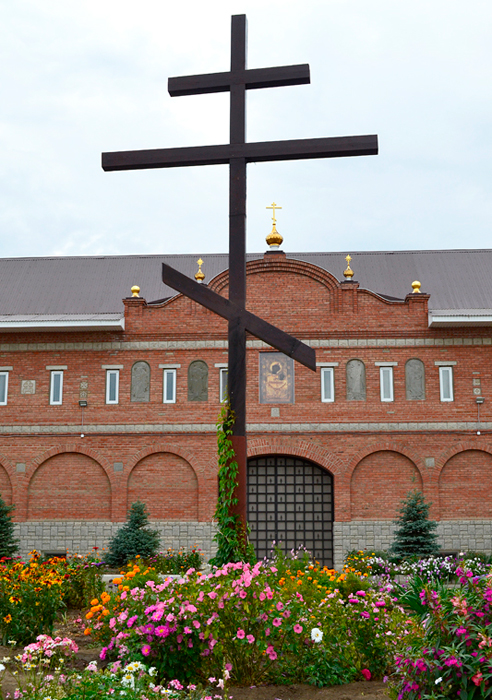
Memorial Cross
In May 2014, a wooden memorial сross was set in front of the main building. The Exaltation of the Honorable and Life-giving Cross of Our Lord was a culmination of the lesson “To Live and to Serve God,” held in a playful way for the students from all the Diocese’s Sunday schools in the territory of the monastery.
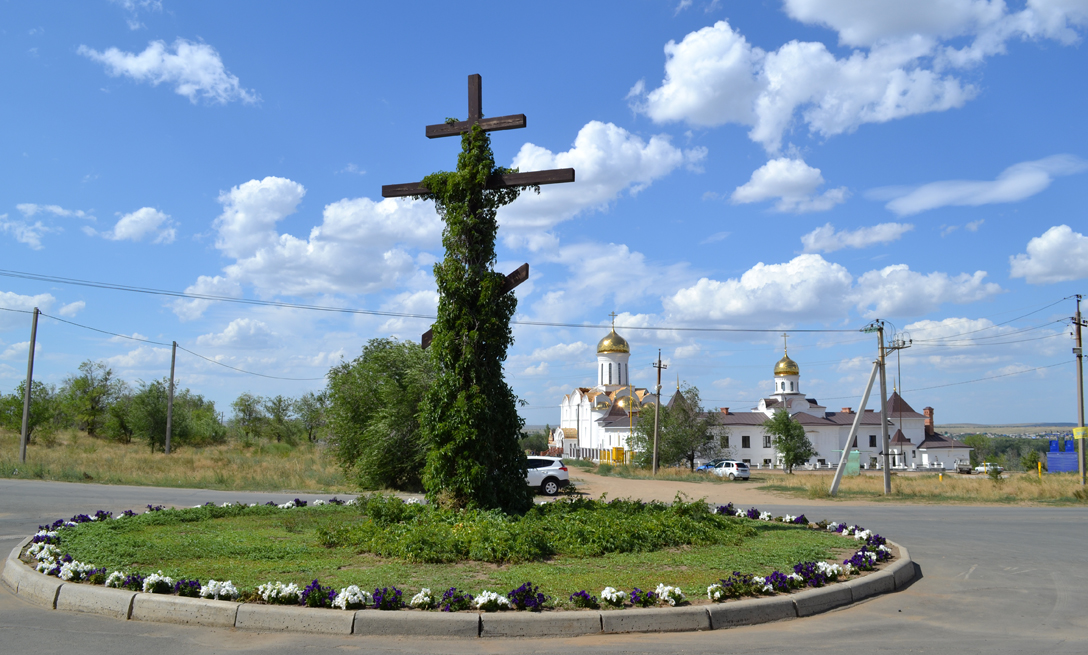
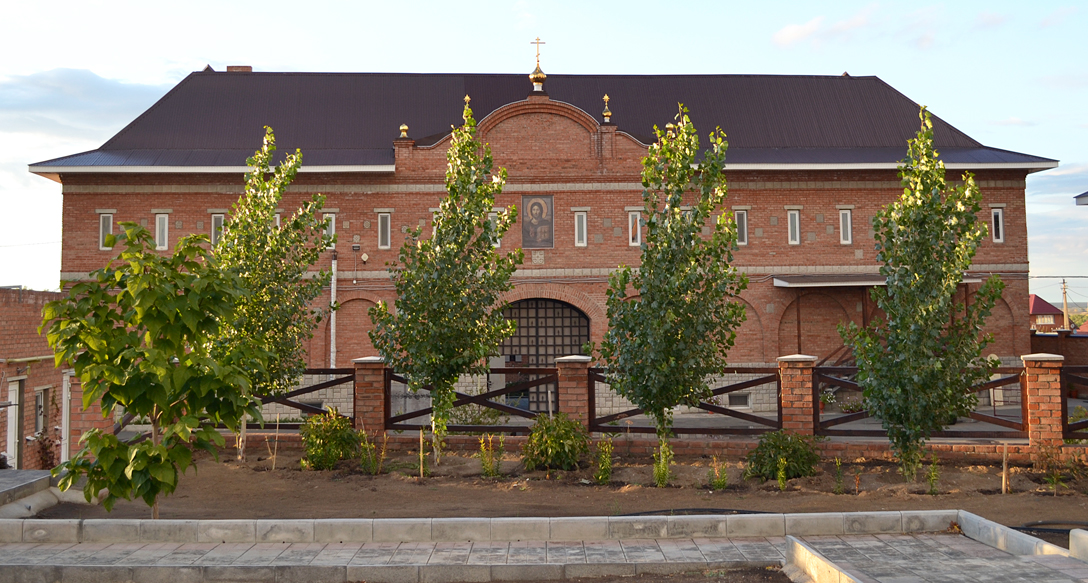
The First Monastic Housing Building with Cells
The main housing building of the monastery currently has 45 cells (21 of them are for the nuns, 19 are for the novices, and 5 are for the priests) and 3 guest cells with the capacity to house 21 people. Each nun has a separate cell of her own, where she has everything needed: a bed, a separate bathroom, a wardrobe, a table, a chair, and a shelf for books and icons.
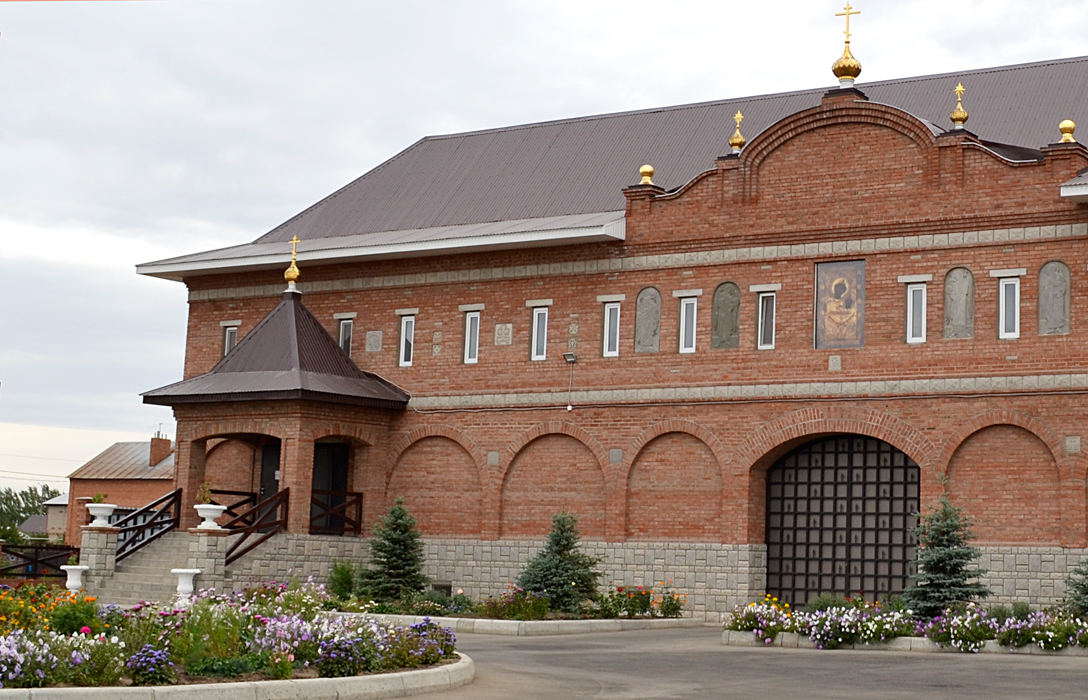
The church dedicated to the Iveron icon of the Theotokos is the largest out of the six churches of our monastery. It is located inside the main housing building. It is where most of the services and all of the monastic tonsures are held. There is an ark with the relics of several saints in this church, as well as the two main holy items of the monastery. The first is the Iveron icon of the Theotokos, painted by the iconographers of the monastery and resembling, as much as possible, the original Iveron icon, located on Mount Athos. The other is a copy of the Athos icon, “Quick To Hear.” The author of the original of this icon, as well as when exactly it was written, is still unknown. This is how the copy of this icon ended up in the Iveron monastery. A man, who buys icons painted by the monks of the Mount Athos from all over the world and gifts them to monasteries and churches, once called archpriest Sergiy Baranov on the phone. Five years ago this man watched a movie that showed an antique store where the icon “Quick To Hear” hung on the wall. He could tell the icon was written on Mount Athos right away. And now all of a sudden he finds in that very store, that very icon, still hanging on the wall, just like it did five years ago. The man then calls Father Sergiy, wanting to present the icon to the monastery. Isn’t it a miracle?
This man says he notices it is like the icons themselves choose the places where they will dwell. And that icon, it seems, was just waiting for the time when it could go to Orsk, to the Iveron monastery.
And what is even more amazing, is this man called Father Sergiy when he was in Orenburg because of a serious illness of his son. In this way, the Theotokos, by guiding her icon to that place, has indeed shown quick help. Father Sergiy went to Moscow on that same day to get the icon and bring it to the monastery. The back side of the icon has a note stating who wrote it and when, but it is hardly legible. The year when it was written is unclear, but its numbers appear to be 1913.
The first Divine Liturgy in the Iveron Church was served on October 26, 2014.
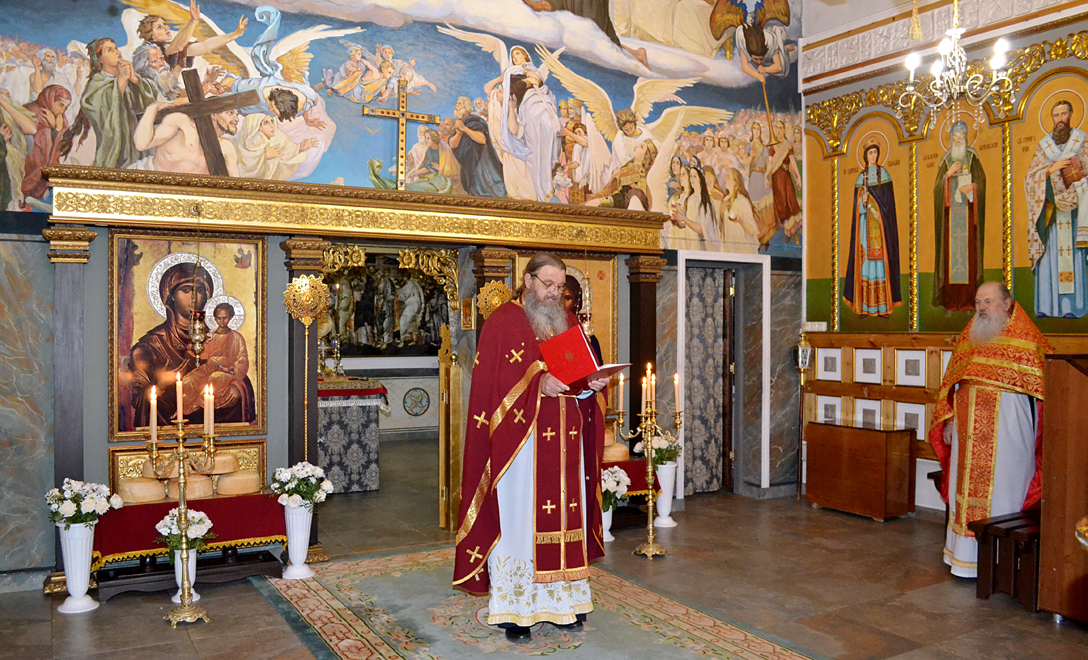
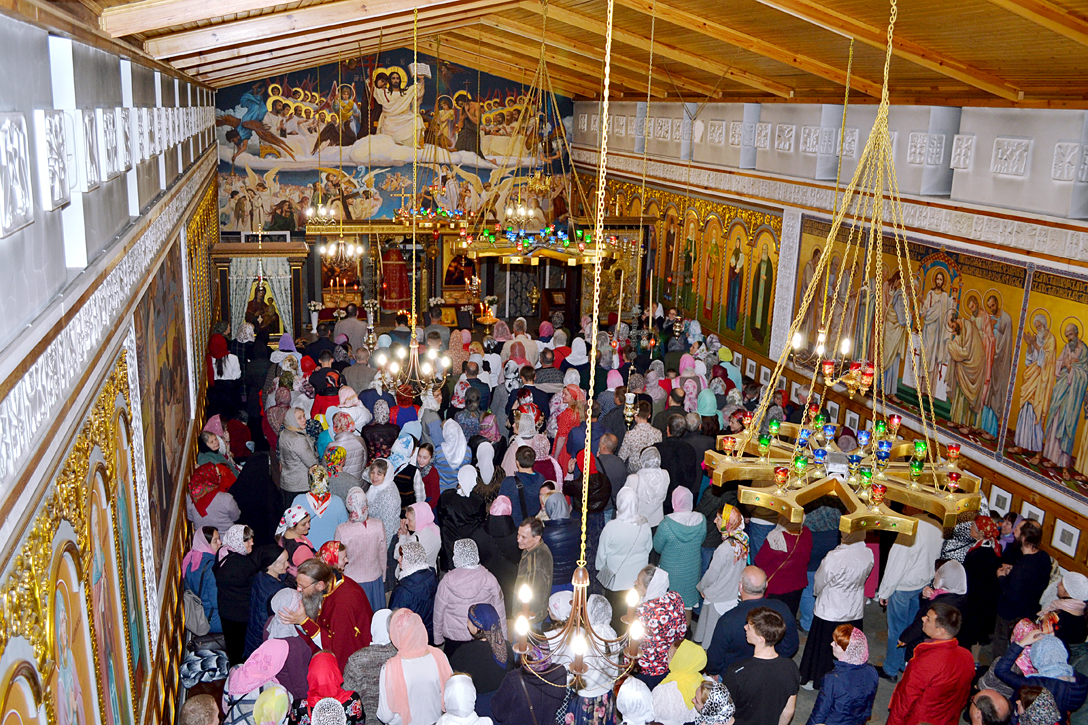
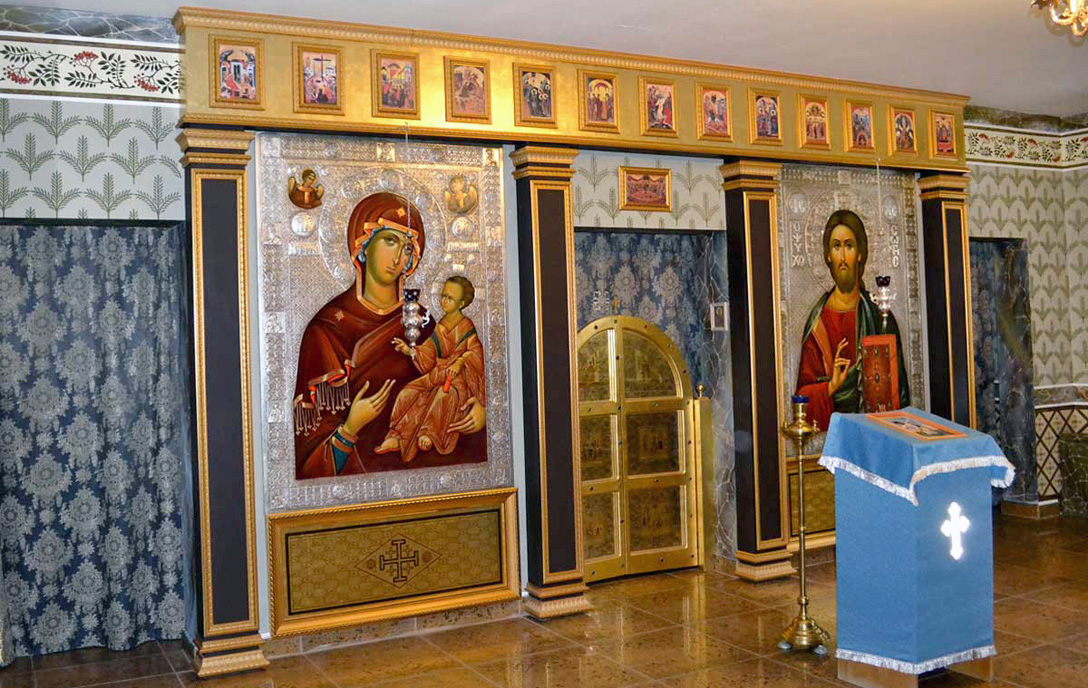
The Church of the Venerable Saint Seraphim of Sarov
It is notable that the altar of the church of Saint Seraphim is located in that very place where the first stone of the foundation of the entire monastery was placed in 2013. This is the reason why the sisters and visitors of the monastery reverently honor Saint Seraphim not only as the patron of Russian female monasticism and for his constant prayers and hard work for building the Diveevo lavra, but also as a Saint praying for the Orsk monastery.
The first Divine Liturgy was served on March 4, 2015.
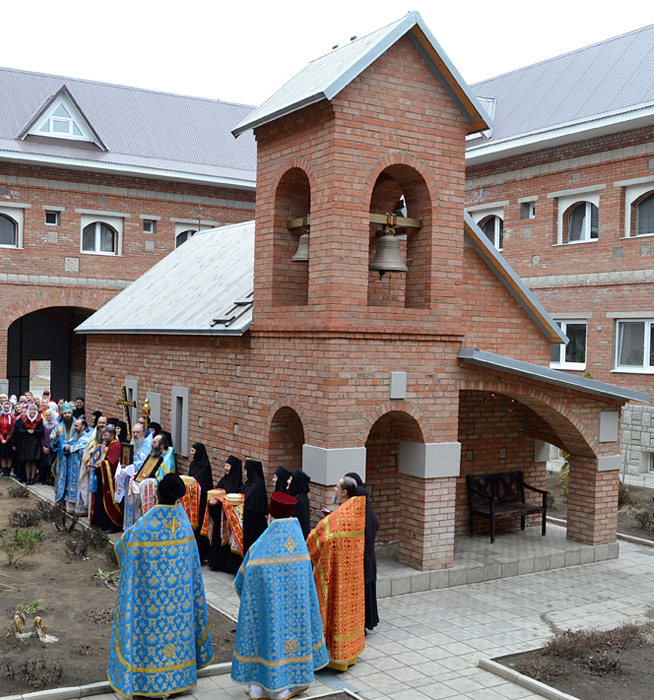
The Church of Venerable Mary of Egypt
This church is located in the middle of the inner courtyard of the monastery as a tall landmark symbolizing the ancient female asceticism. According to the idea of the spiritual father of the monastery, archpriest Sergiy Baranov, this church is to remind us of the ancient times and of the old churches of Georgia and Greece, to strengthen our faith and to inspire us to serve God.
The construction of this church began in the early spring of 2014, and the very first Divine Liturgy in the monastery was served there on August 1, 2014.
It is symbolic that this happened in the church of Saint Mary of Egypt and on the day we commemorate Saint Seraphim of Sarov, who is especially honored by all the sisters of the monastery. It is like this day marked the beginning of the future ascetic practices and struggles of the sisters of the Iveron monastery.
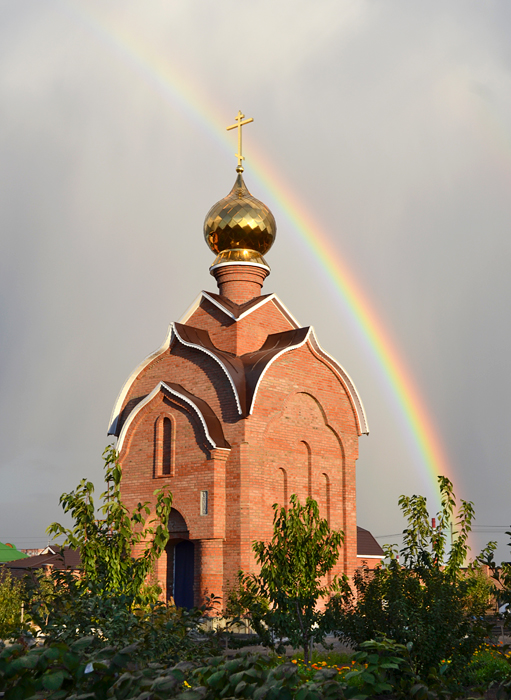
The Church of Venerable Saint Sergius of Radonezh
The name of this ascetic is particularly venerated by all the faithful people. It is not by chance he is called the Protector of the Russian Land, great God-pleaser, and great name in history, owing to his spiritual efforts, which resulted in unifying Rus around Moscow. Thanks to St. Sergius, it was possible to reconcile the principalities scattered by civil strife and form a force capable of breaking the enemy, which happened on the Kulikovo field.
Saint Sergius was a living example of how spiritual concern for the salvation of one’s own soul becomes a matter of public significance. For being near a man of such spiritual experience, who is ready to share it with others, thousands of people will find their salvation.
That is why we laid the basis for our orchard on the day of the 700th anniversary of Saint Serguis’ birthday. And a year later, in this orchard, in May of 2014, a foundational stone of the future church of Venerable Saint Sergius of Radonezh was consecrated.
The first Divine liturgy at the new church was held on July 18, 2016.
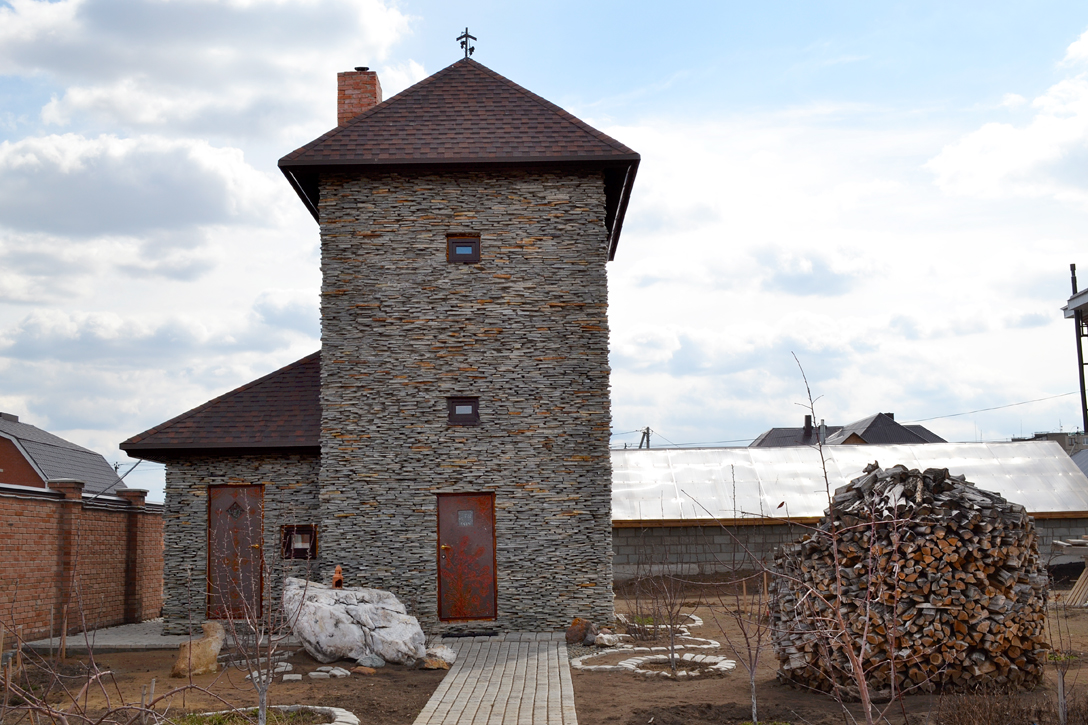
The Church of Saint Gabriel Urgebadze
This is most likely the first church in Russia to be dedicated to this Saint, and it is like a symbol of spiritual friendship between the people of Orsk and Georgians. There is an icon of Saint Gabriel with a piece of his relics, gifted by the people of Georgia, in the church, as well as a gift blessed by the Patriarch of Georgia - an icon of Saint Nina the Enlightener of Georgia. The construction of the church was financially supported by the Georgian diaspora, the Chitishvili family. The church is built in the Georgian style, lined with natural stones. There is a solitary cell built into the church where the sisters can spend time in seclusion, on the yearly anniversary of their tonsure, for 3 days.
On May 8, 2016, the sisters were still chanting the Akathist to Saint Gabriel over the foundation of the church. On October 23rd, a Georgian style cross (with the vine branch) was placed on the church, and on November 2nd, the first Divine Liturgy was served in the church.
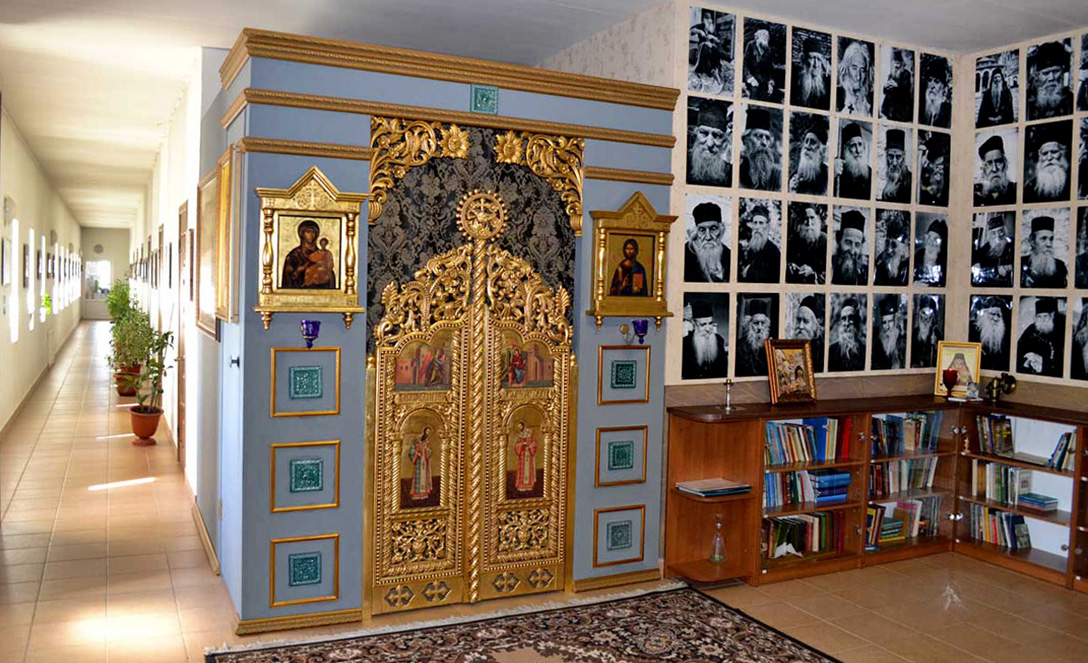
The Church of Saint Symeon the New Theologian
This small house church is dedicated to a Saint whose spiritual experience and principles are very close to the sisters of the Iveron monastery. The basic ascetic practice of Saint Symeon was the Jesus prayer in its shortest form: “Lord, have mercy on me!” The prayer practices based on the works of this Saint have entered the daily lives of the sisters of the Iveron monastery. According to the words of Saint Symeon, the person who does not become one with Christ in this life, will not become one with Him in the life to come. This saying encourages the believer to be constantly earnest in prayer, and not just to the outward practices of tradition, but to the inward work.
Saint Symeon the New Theologian is considered to be the most outstanding mystic of the Orthodox Church, one of the three Fathers the Church has deemed worthy to be called “Theologians.” The first is Saint Apostle John, the favorite disciple of Christ. The second is Saint Gregory the Theologian. And the third is Saint Symeon the New Theologian. It was only these three holy fathers that the Church, in its 2000 years of existence, has decided to call theologians. In his “Hymns of Love” (one of which is often chanted in the Iveron monastery), venerable Symeon has described the yearning of the human soul for God.
The services in this church are always very special; they are loved by everyone. The people stand very close to one another as the area is very constricting. Because the altar is very near, you can clearly hear the secret prayers of the priest.
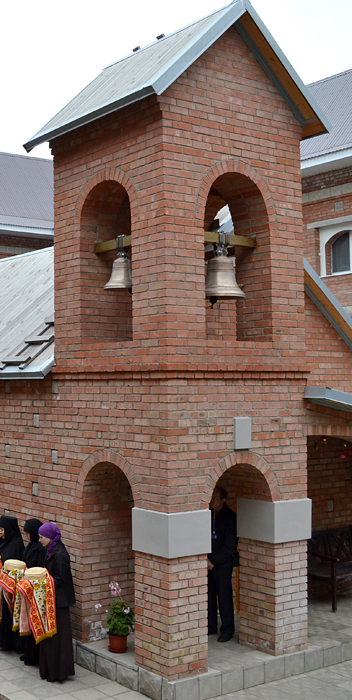
Bell-Tower
The Bell-Tower is built on the Church of the Venerable Saint Mary of Egypt. The sisters and the guests of the monastery heard the chime for the first time on Pascha 2016.

The Second Building with monastic cells
There are 36 cells in the second building of the monastery. It is occupied by the young nuns. The House Church of Saint John, Wonderworker of Shanghai and San-Francisco, is built into it.
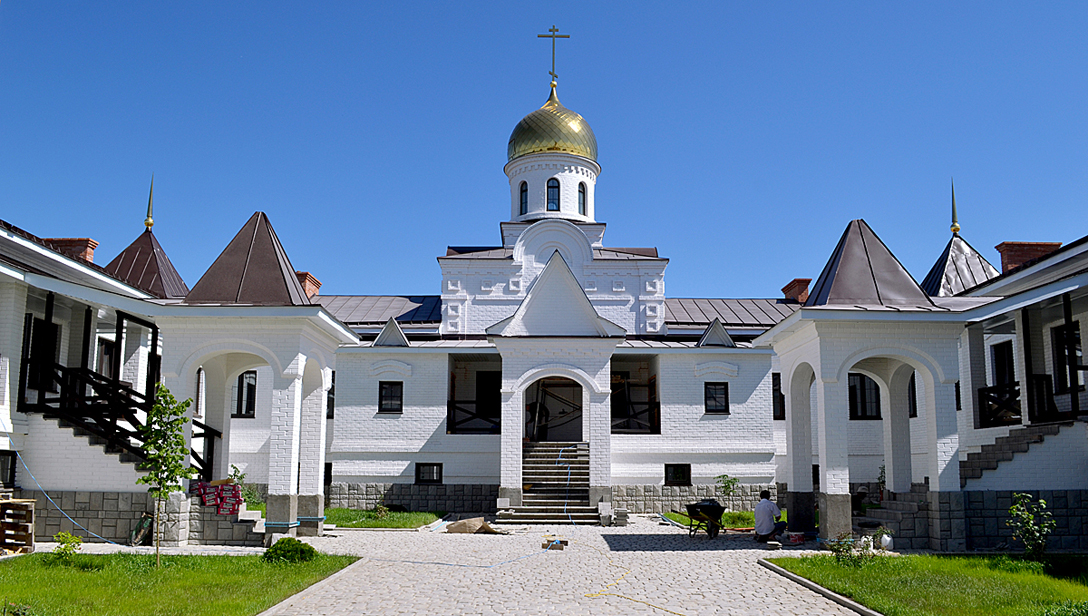
Church of Saint John, Wonderworker of Shanghai and San-Francisco
The church is located at the second building of the monastery. Its construction initiator is Patermufius, a Russian benefactor residing in Switzerland.
On the day of Annunciation, April 7, 2019, a service for the beginning of a good deed was held on the site designated for the new monastery complex. On the next day, the construction began. On June 17, 2019, the day of the Holy Spirit, a ceremony of the laying of the foundation stone took place. It is remarkable that June 16, the day of the Holy Trinity, matched with the birthday of Saint John of Shanghai.
The company “Slavstroyrestavratsya” (Director Vyacheslav Konovalov) executed the construction.
On September 21, 2020, on the feast of the Nativity of the Theotokos, the church was ready. The monastery’s iconographers painted the walls of the church with beautiful ornamentation.
The first Divine Liturgy was held on November 2, 2020.
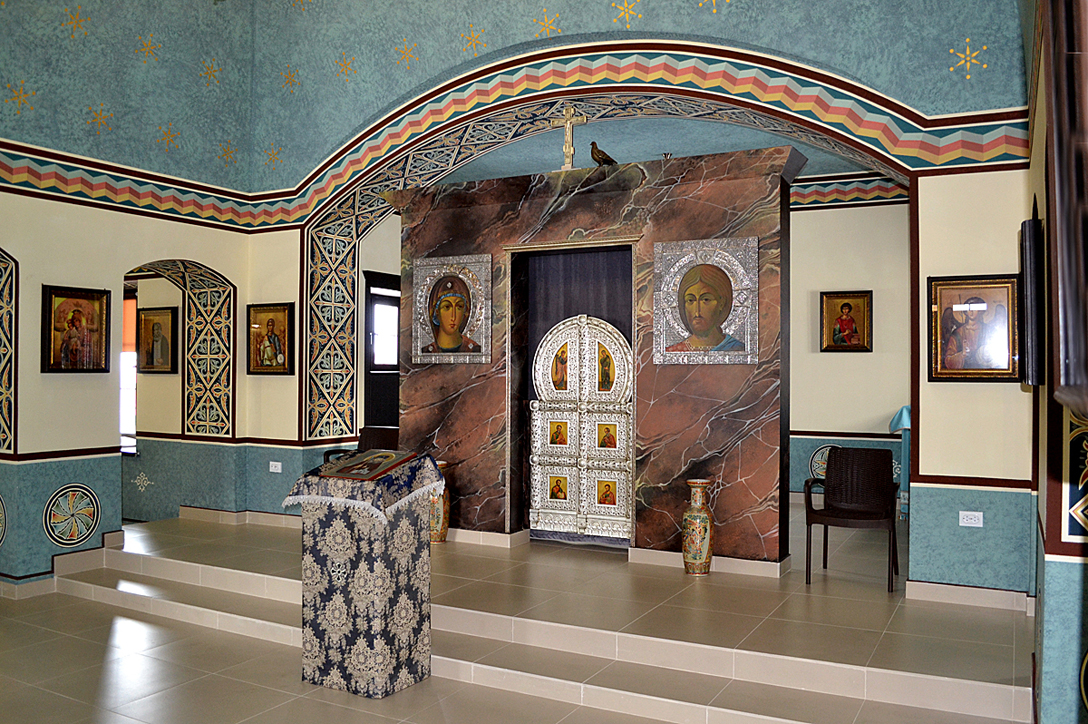
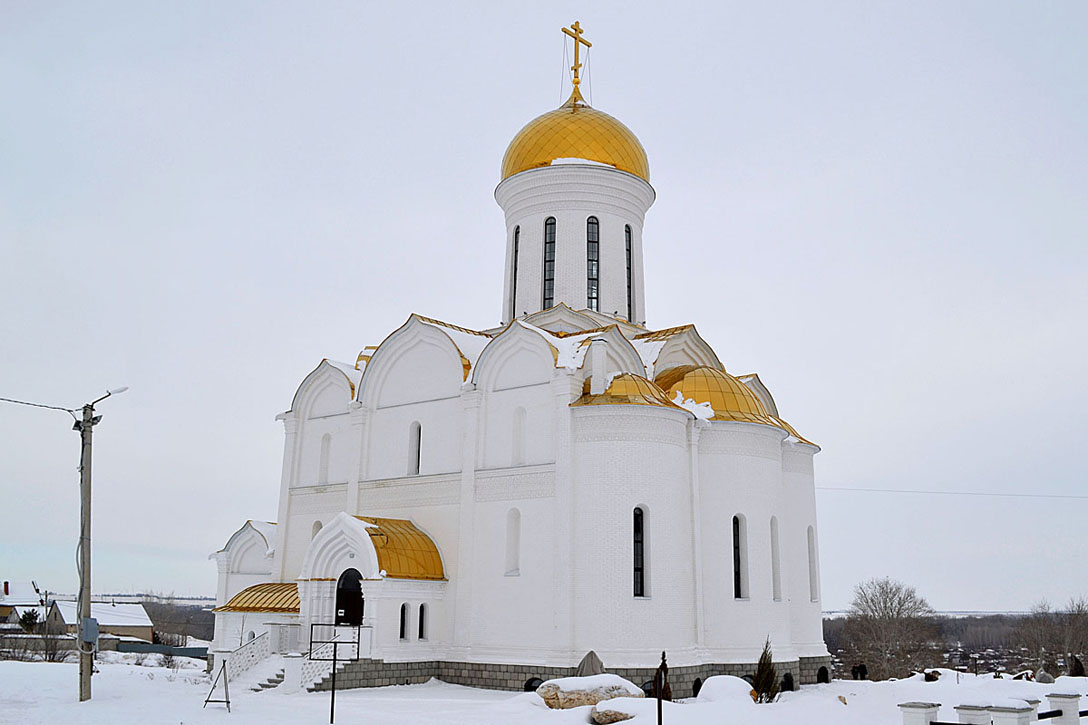
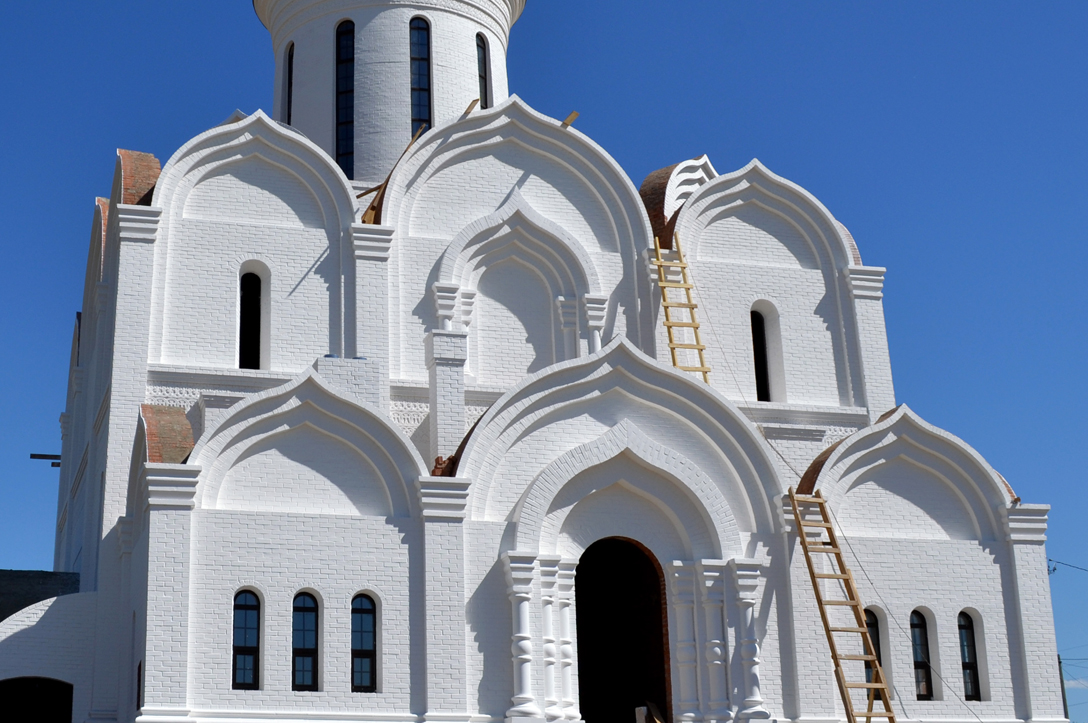
The Holy Trinity Cathedral
is an almost exact reproduction of the famous Holy Trinity Cathedral built in the 15th century at the Holy-Trinity Saint-Sergius Lavra, where the relics of the Venerable Saint Sergius of Radonezh repose.
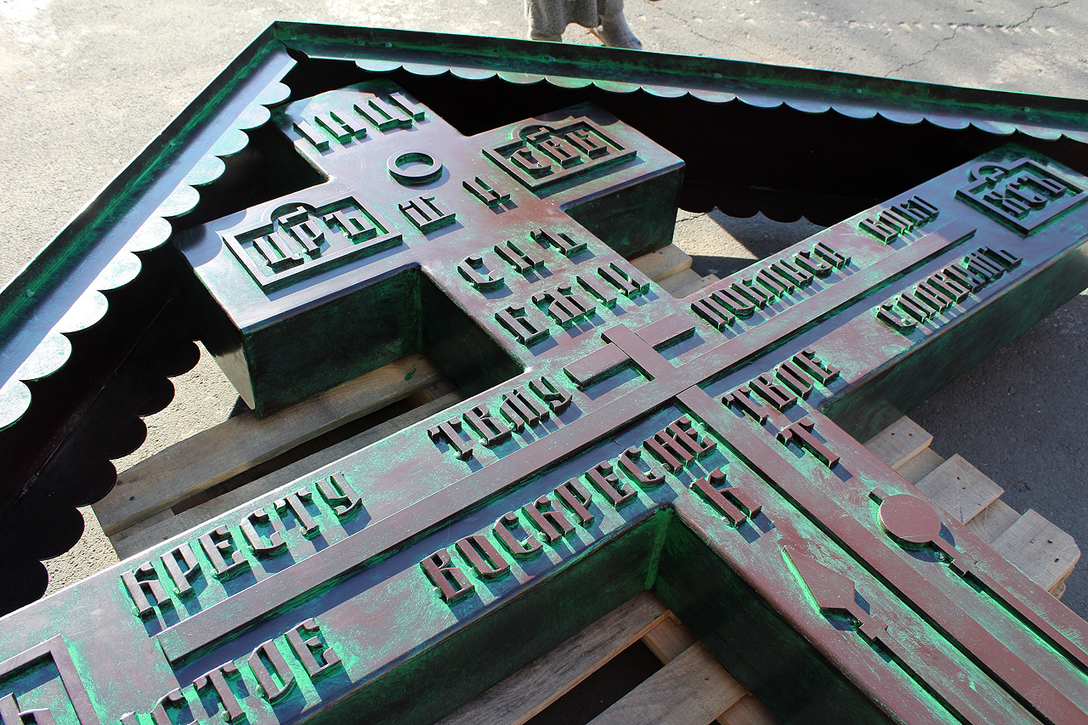
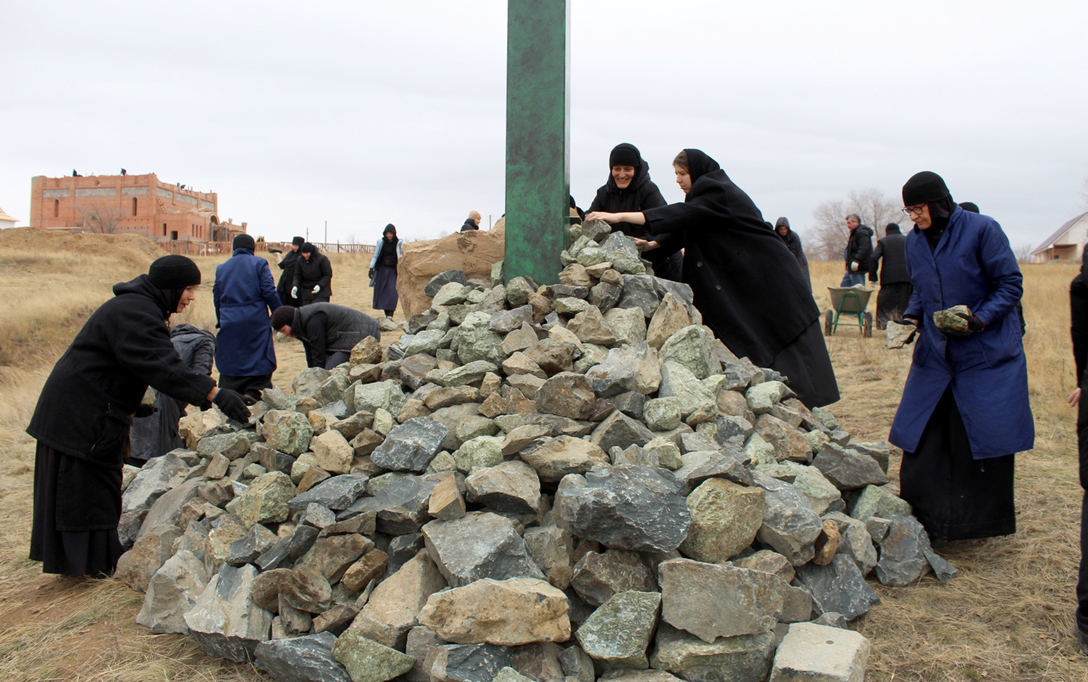
The Memorial Cross, set on a rock situated near the path to the Holy Water Chapel, was mounted on November 7, 2019. Abbess Xenia (Pashkova), monastery’s nuns, novices and workers, led by their spiritual father, archpriest Segiy Baranov, took part in mounting the cross.
Following the ancient tradition, the participants laid stones at the foundation of the cross. Everyone brought as many stones as he or she was able to. The pile of stones, which grew up to form a hill, symbolizes Mount Golgotha, where Our Lord Jesus Christ was crucified.
On November 10, Father Sergiy, assisted by heiromonk Philaret (Davydov) and priest George (Dynnik), blessed the Memorial Cross.
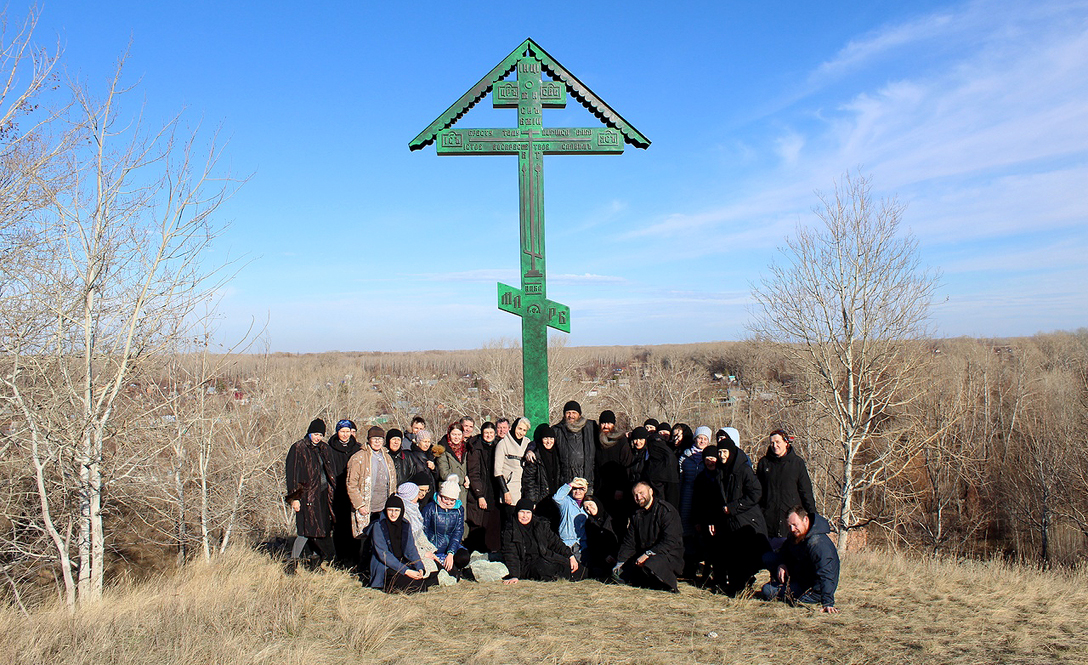
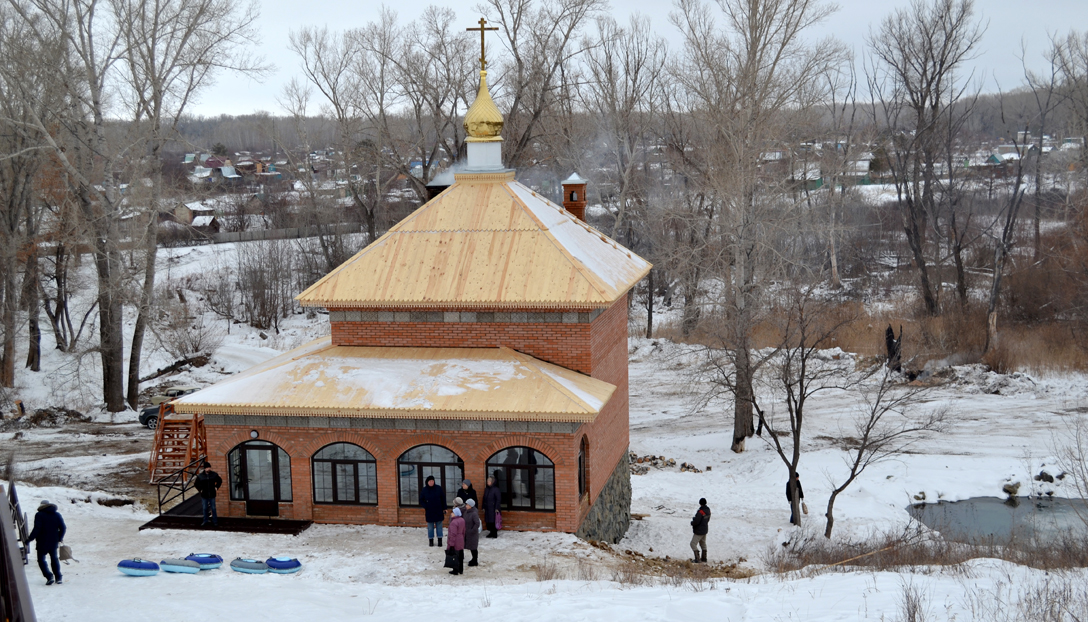

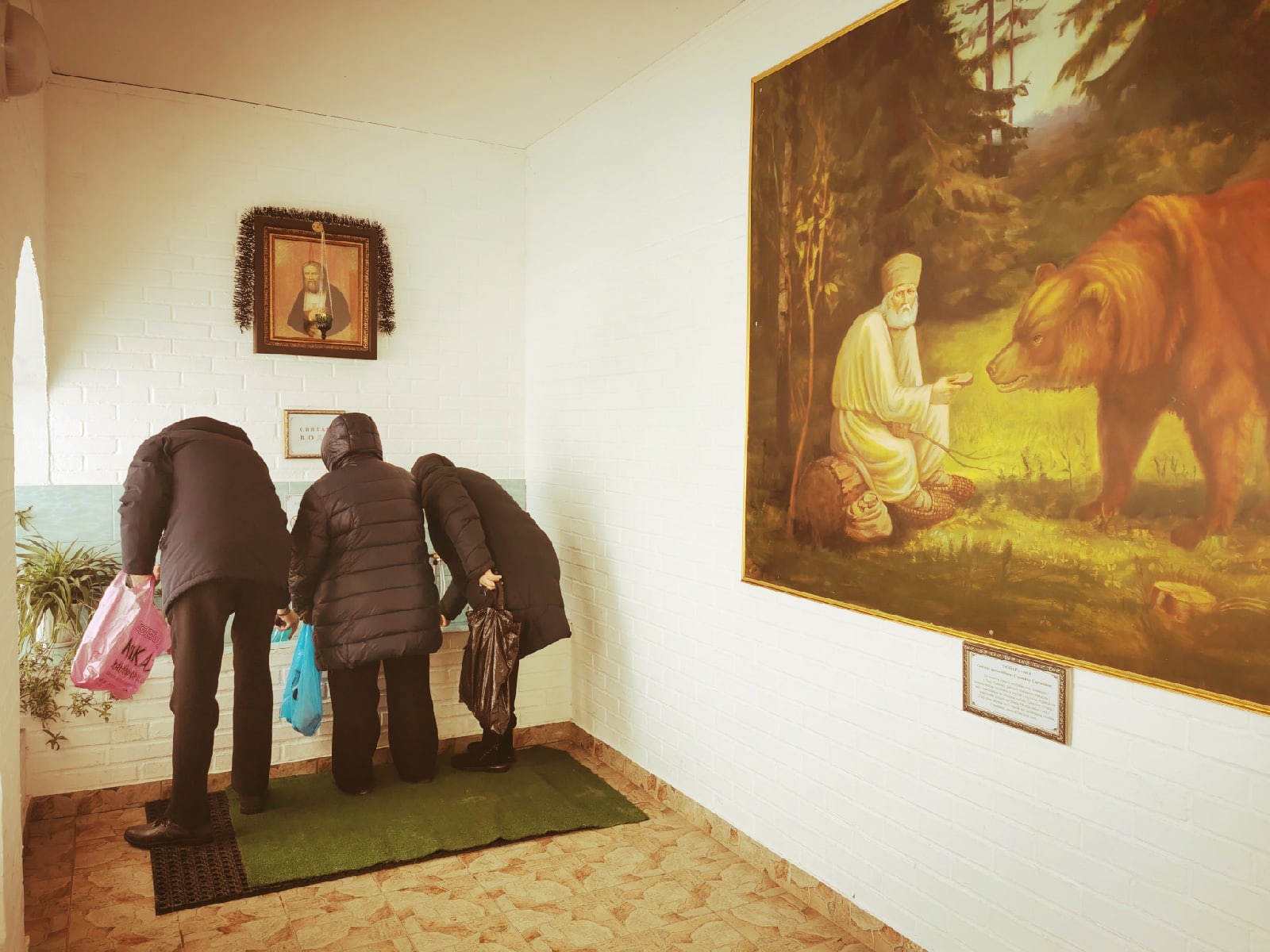
Holy Water Chapel of Venerable Saint Seraphim of Sarov
On July 12, 2019, the day of the veneration of Apostles Saints Peter and Paul, in a forested area not far from the Pilgrimage Center of the Iveron Monastery, with the blessing of Irenaeus, Bishop of Orsk and Gai, a borehole was drilled. Clean and drinkable water began to flow from it. In a few days, a foundation for the Holy Water Chapel of Venerable St. Seraphim of Sarov was laid near the spring.
This holy site features bath-houses equipped for both men and women. People can come and immerse themselves in the holy water. The number of such holy water chapels and bath-houses in the Orenburg Region is next to nothing. The construction of the Chapel was finished at the beginning of January, 2020 and on the day of Theophany a Great Blessing of the Waters was held. On that day, not only the sisters and pilgrims, but also hundreds of Orsk inhabitants took a plunge into the icy water of the bath-house. The Chapel became a piece of heritage for all Orsk residents and visitors.
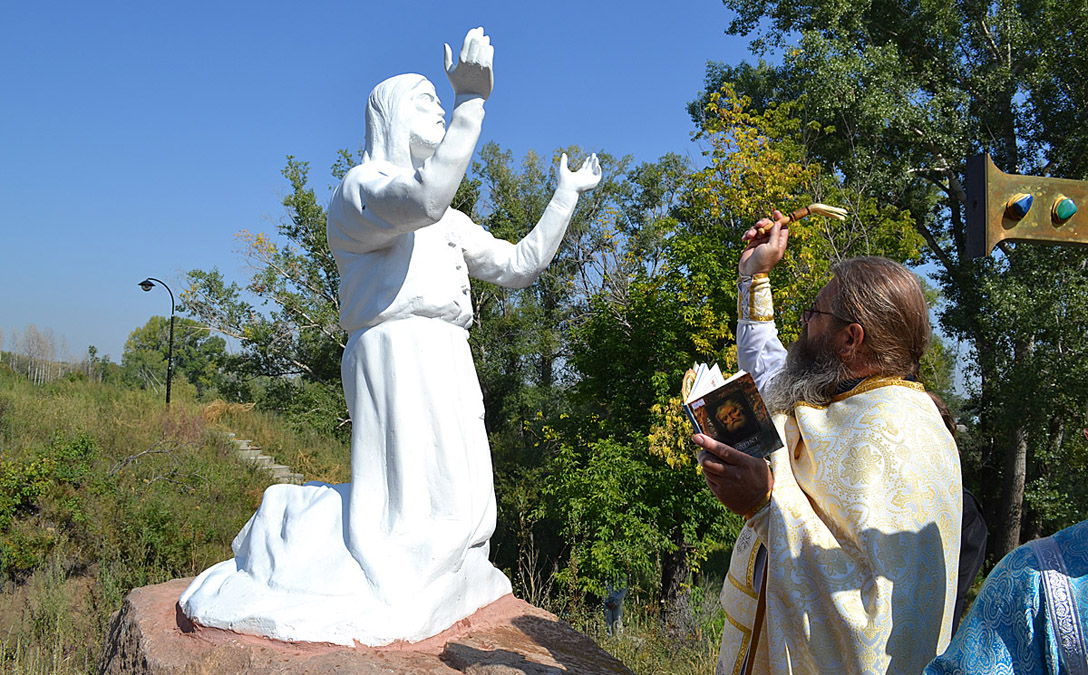
Monument to venerable Saint Seraphim of Sarov
On August 15, 2021, in the Iveron Monastery surroundings, a monument to St. Venerable Seraphim of Sarov was installed and blessed.
Many holy sites of our monastery are related to the name of the Sarov wonder-worker. We have both a church and a holy water chapel of St. Seraphim. A Path of the Holy Theotokos was laid, which is reminiscent of the Holy Canal (Kanavka) of Our Lady Theotokos in Diveyevo – one of the most venerated sites of the Seraphim-Diveyevo Monastery. A small forest cabin was also built, resembling the one of Holy Father Seraphim where he lived all by himself as a hermit for 16 years. And now we have the monument to this incomparable prayer who performed a feat of stylitism like early Christian ascetics before him.
A stone sculpture of the saint was made by a skilled craftsmen from St. Petersburg, funded by the Iveron Monastery. You can find it at the end of the Path of the Holy Theotokos, near the Holy Water Chapel.
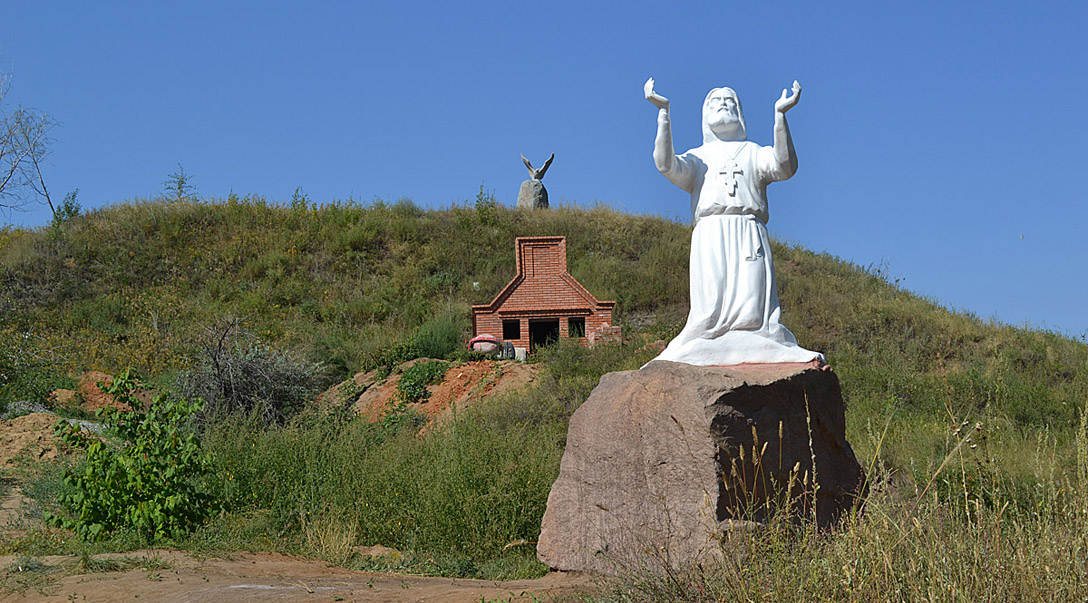
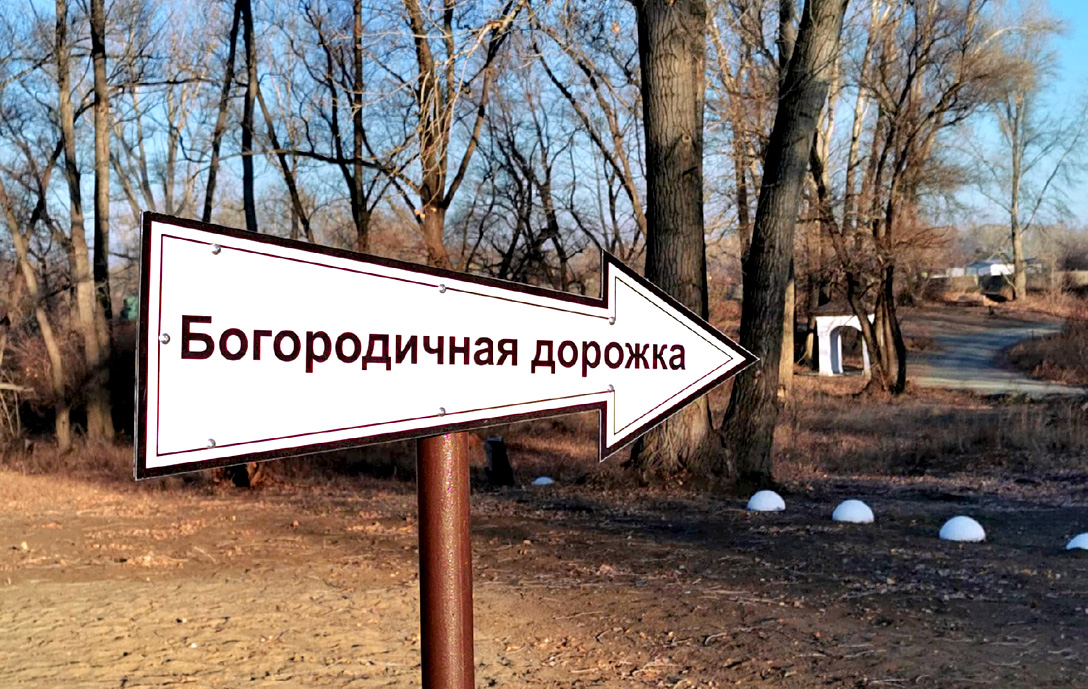
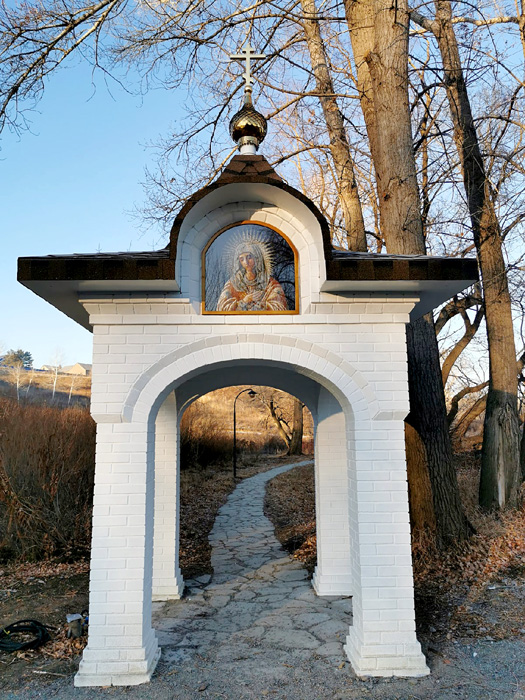
The Path of the Holy Theotokos
In our Iveron Monastery, we particularly venerate Holy Father Seraphim of Sarov, which is why we decided to lay a path dedicated to the Holy Theotokos resembling the one at the Holy-Trinity Seraphim-Diveyevo Monastery. The Holy Canal (Kanavka) of Our Lady Theotokos is one of the holy sites of Diveyevo. It was excavated upon the decision of St. Seraphim and with his assistance.
There appeared benefactors and enthusiasts among the inhabitants of Orsk, who endorsed the idea of archpriest Sergiy Baranov, the spiritual father of our monastery. He suggested laying a path 880 meters long around the lake, situated in the surroundings of the Holy Water Chapel of St. Seraphim, so that people who would walk down this path could pronounce the prayer "Rejoice! O Virgin Mother of God!" 150 times.
In June 2020, the sisters and the parish of the Iveron Monastery started to take care of the territory where the future path would be laid. They cleared out the site from dry shrubs and thicket. Ten truckloads of garbage, which gardeners had been discharging at the banks of the lake for years, were driven away from the territory. At one side of the lake, where it grows into a swamp, a bridge was built. The path was paved. All works were finished in a month and a half. Finally, on August 1, 2020, the day of uncovering of St. Seraphim’s relics, the Path was blessed.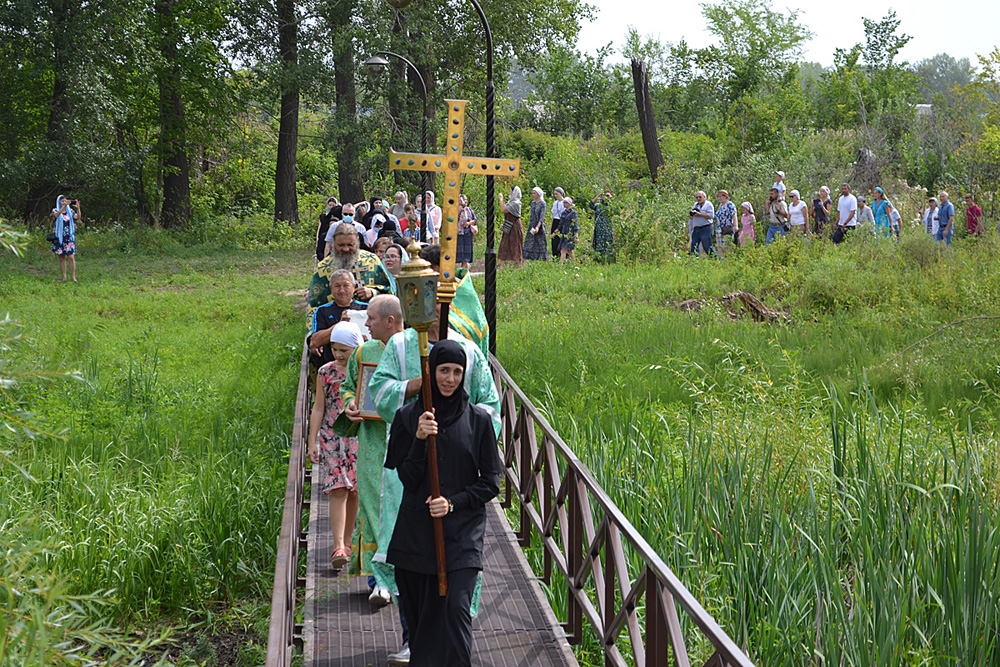
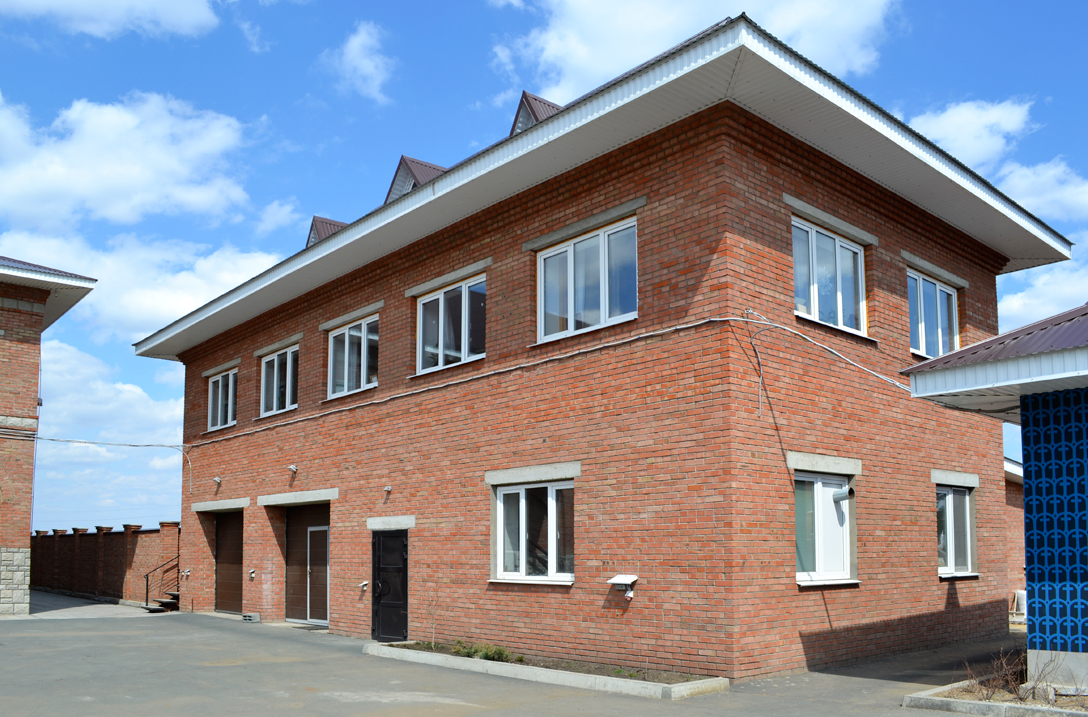
Iconography Workshop
It was created in Orsk, under the guidance of father Sergiy Baranov, and has been up and running since 1997. It has been located at the monastery since 2014.
Many of the churches in Orsk have been painted by the iconographers of this workshop.
Many of the icons painted in this workshop, including those painted by Father Sergiy himself, were later gifted to monasteries and poor parishes. The icon of Saint Nicholas was gifted to the monastery in Shamordino. The icon of the Theotokos “One Who Gives Rest” was given to the church of Saint John of Kronstadt in Saint Petersburg. The icon of Saint Anna was gifted to the chapel of Saint Xenia of Saint Petersburg. The Iveron icon of the Theotokos was given to the Diveevo monastery in Zadonsk and there were also many others among these. Many icons of the Theotokos were gifted to the Iveron monastery in Samara.
In 2008, Father Sergiy painted the church of the Nativity of the Theotokos in the cell Panagitsa, belonging to the Simonopetra monastery on Mount Athos.
The workshop also restores old icons and creates new ones using traditional techniques. The artisans have mastered gilding using gold leaves, carving on the gesso. Gesso carving is a special process when a special mixture is applied on the gesso, and after it dries up, the artisan then carves a three dimensional image. This technique was used to create two icons that are exact copies of the ones on Mount Athos of Jesus Christ, the Savior, and Panagia, the Gerondissa. There are none like these two in all of Russia. The style of iconography is canonical, predominantly Byzantine, Athonite.
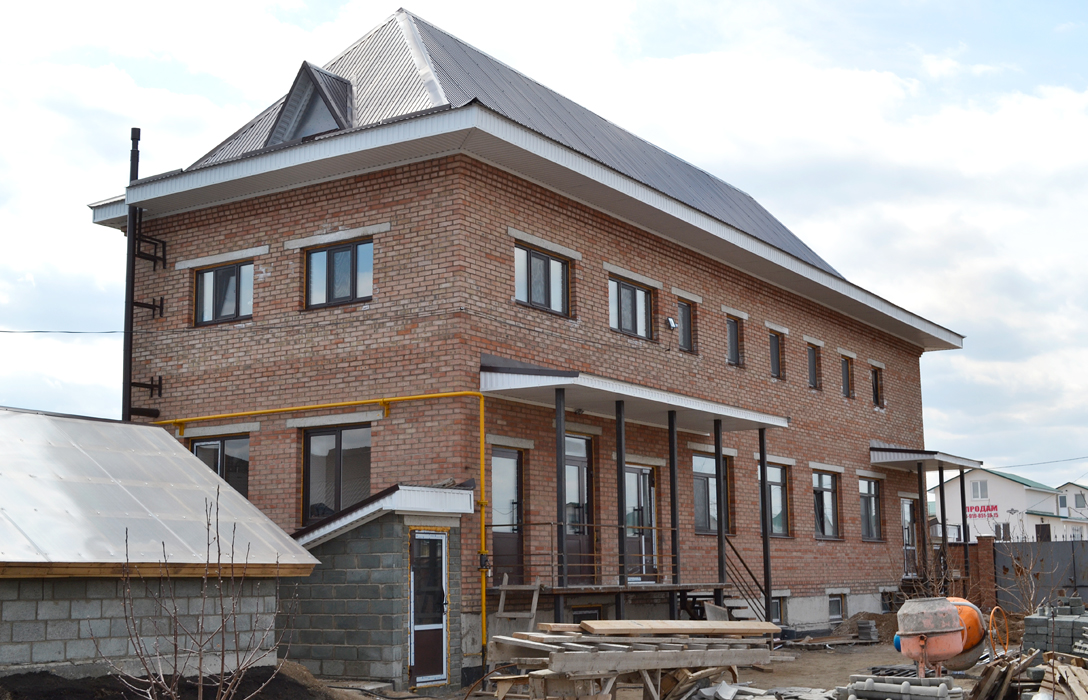
The building of the bakery with cells for pilgrims and visitors
It was consecrated and produced its first goods in 2015. The facility is located on the first floor and is equipped with modern appliances. The assortment of pastries is constantly expanding. The most prominent products are two kinds of yeast-free bread: bran bread and brick-bread. There are three kinds of rye bread that are produced: Borodino bread, fragrant bread, and Rizhsky bread, as well as Lenten buns. Every day, over 500 loaves of bread and several hundreds of buns come out of the oven. On the second floor, there are cells equipped especially for pilgrims and visitors of the monastery.
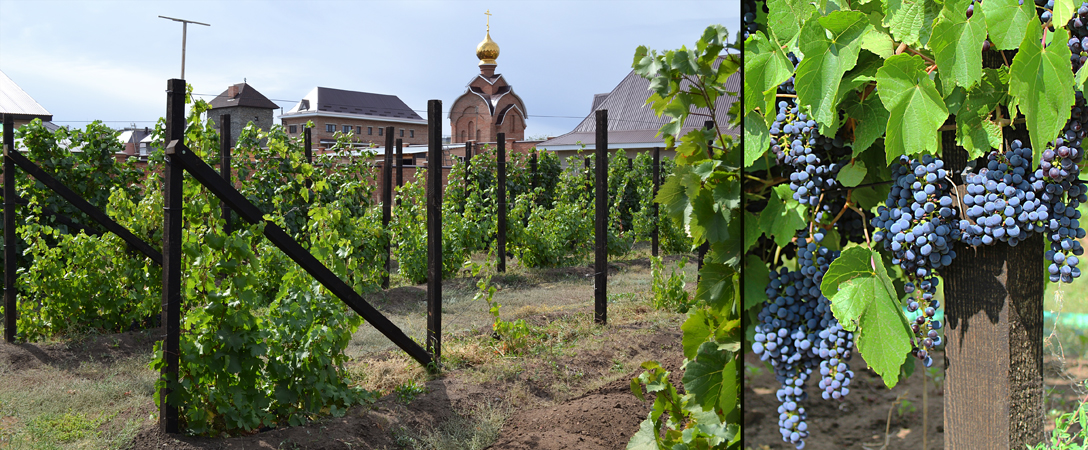
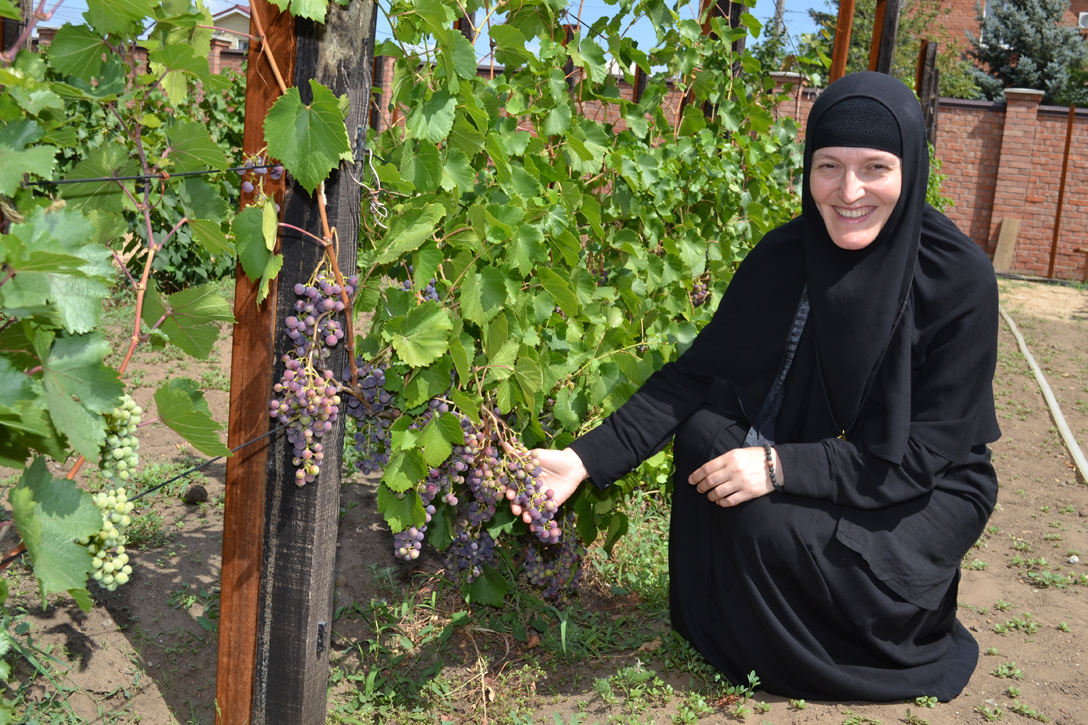
The Vineyard
The sisters of the monastery are not just exceptional gardeners, they are also excellent vineyard keepers.
They have already grown many wonderful varieties of grapes that are not inferior in taste to the Southern ones. They have properly learned the science of vineyard keeping, and the results astonish even experts who have in-depth experience in viticulture.
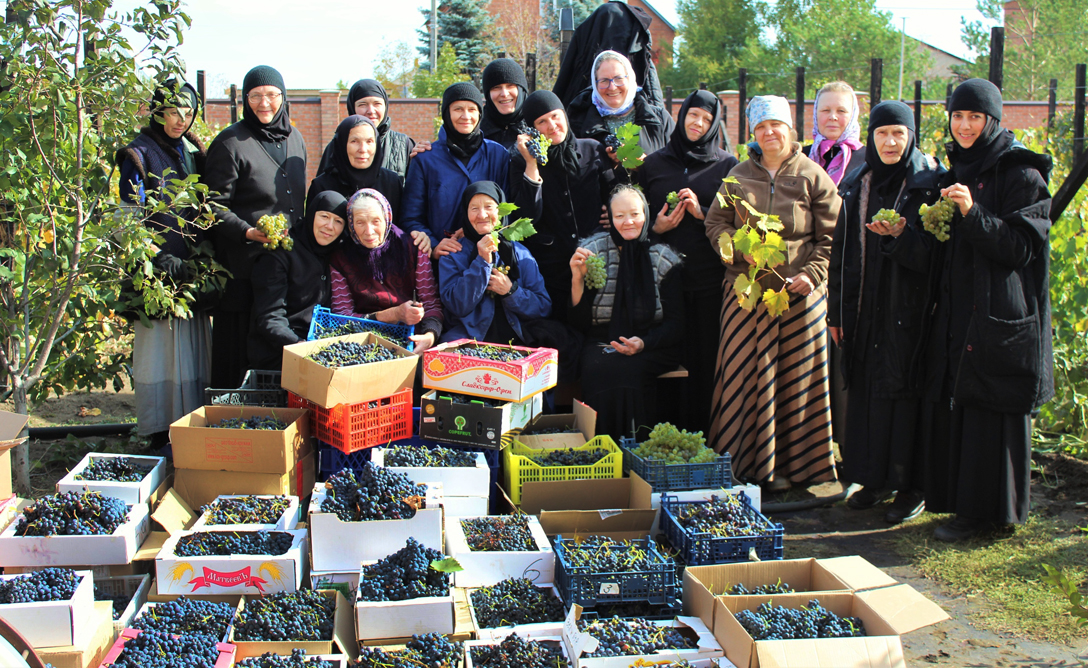
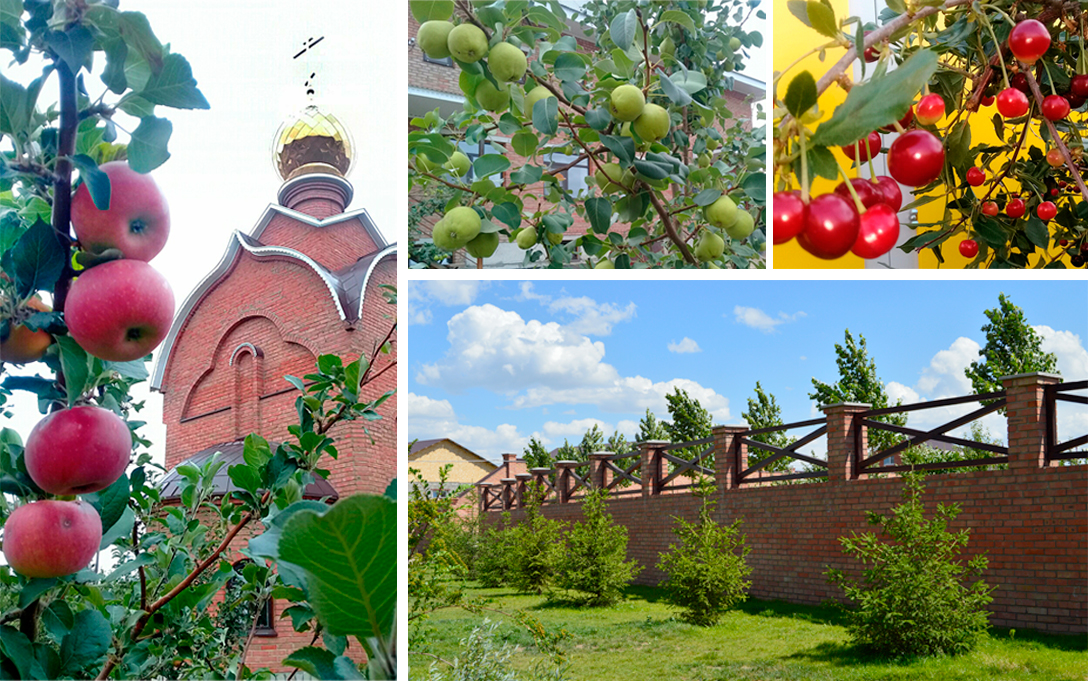

Orchards
On May 9, 2014, the day of the Great Victory, a fruit garden was laid out in the territory of the monastery. The orchard was dedicated to the 700-year anniversary of Venerable Saint Sergius of Radonezh. Our benefactors presented us with 150 fruit trees and about the same number of bushes. All the plants established strong roots and make the sisters and the guests happy. Such plants as apple, pear, apricot, peach, cherry and plum trees, together with the bushes of gooseberry and currants and many others grow in the orchard.
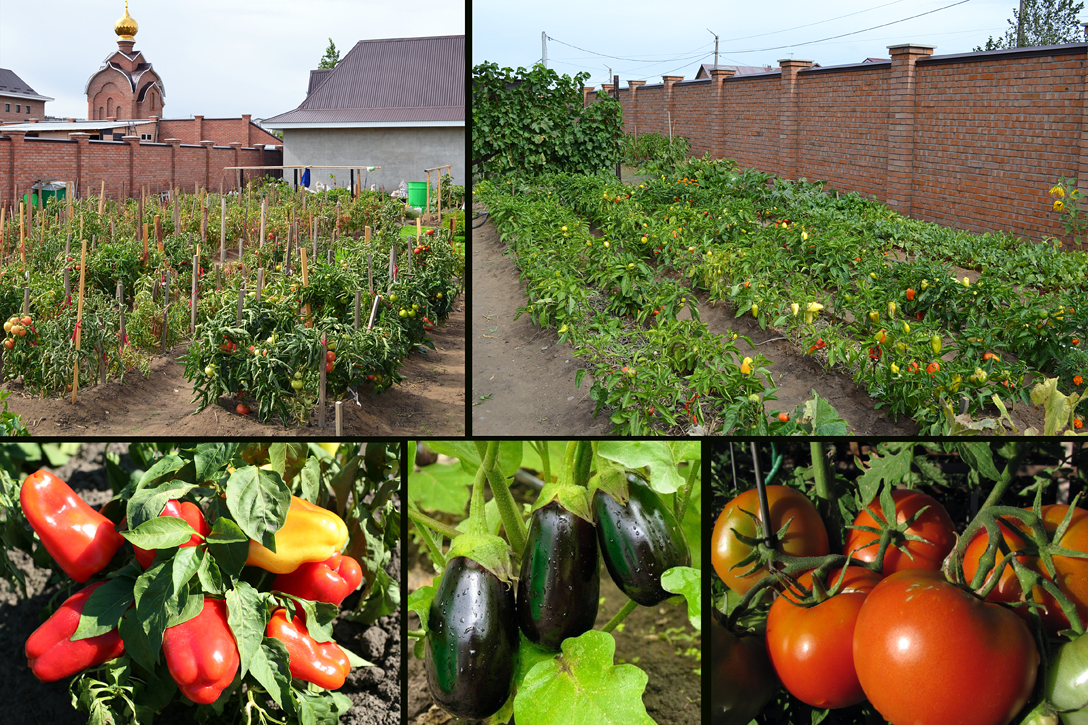
Vegetable garden
A spot of about five hundred square meters was designated for planting vegetables. The sisters transformed it into a wonderful vegetable garden. Everything grows so fast in it with the help of God! There is not a thing we lack! A rich harvest ripens every year thanks to each sister of the monastery, who takes care of the plants with great pleasure. As a result, we have vegetables, enough to nourish ourselves during the year and to share with our multiple pilgrims and guests, coming from different parts of the country. At the end of the season, our vegetable storehouse is filled with jars of the tastiest pickles.
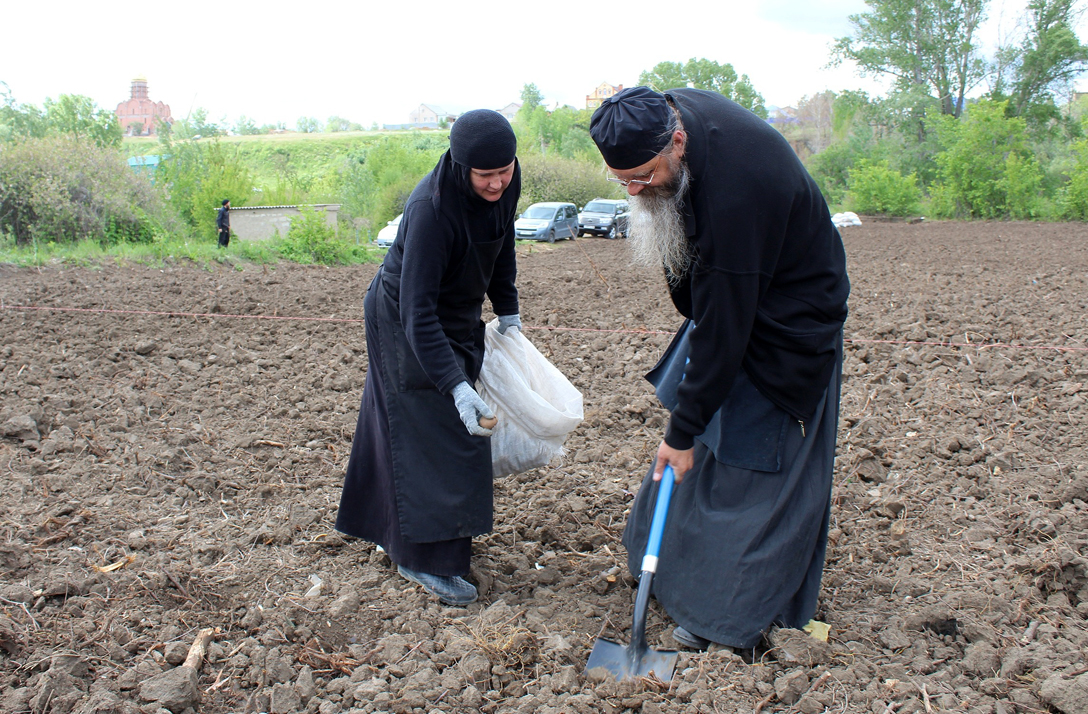
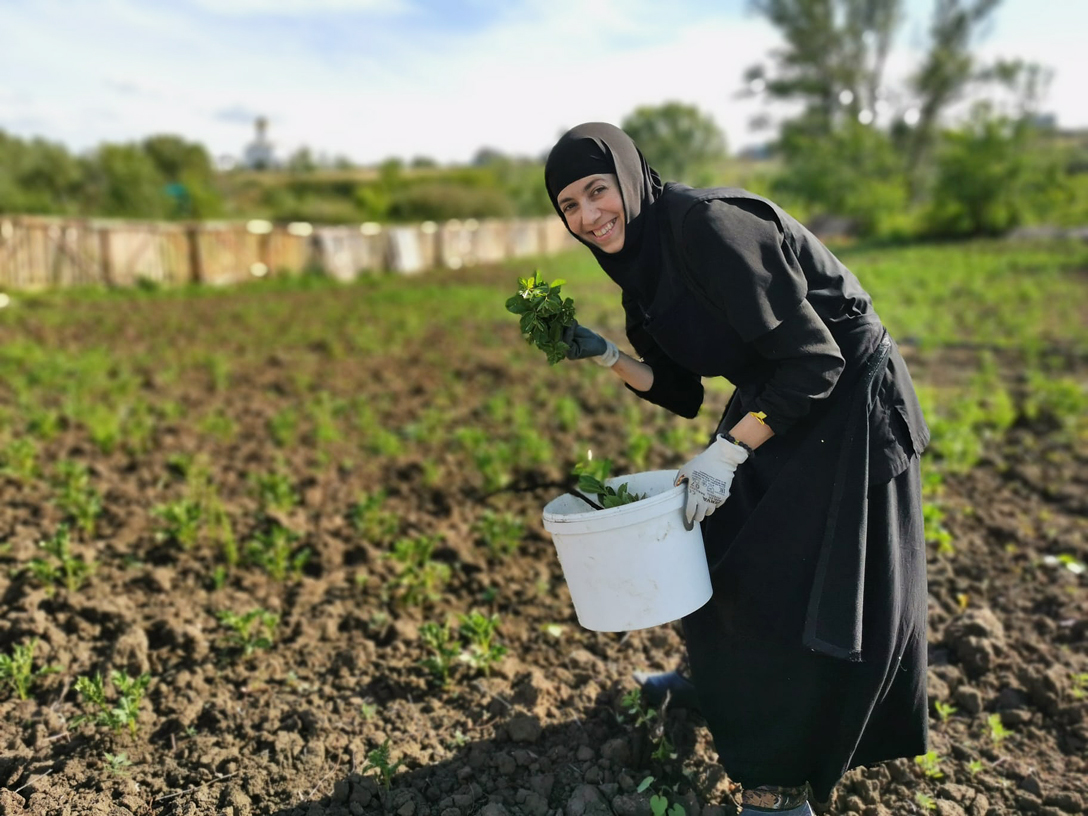
Potato field
Every year we plant a vast field of potatoes by ourselves. The size of the field is more than a half hectare (over one acre).
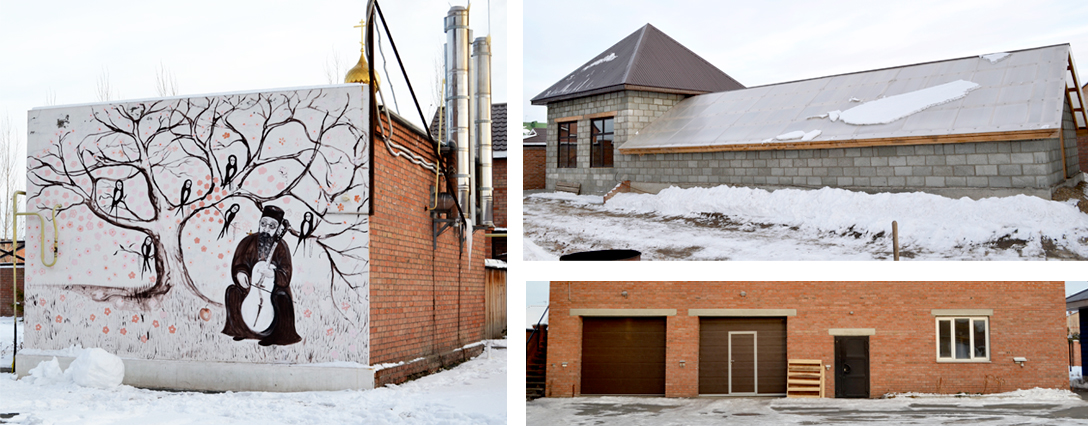
Household buildings
There is a carpenter’s workshop, a boiler-house, a garage, a greenhouse, and a cold cellar on the territory of the monastery.